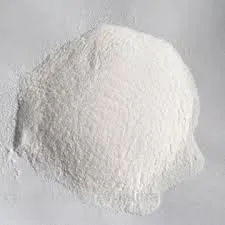
ئۆكتەبىر . 19, 2024 08:58 Back to list
uses of hydroxypropyl methylcellulose
The Uses of Hydroxypropyl Methylcellulose
Hydroxypropyl methylcellulose (HPMC) is a versatile and synthetic polymer derived from cellulose, which is a natural polymer found in the cell walls of plants. Prized for its unique combination of properties, HPMC is widely used in various industries, ranging from food production to pharmaceuticals and construction. This article explores the multifaceted uses of hydroxypropyl methylcellulose, highlighting its significance across different sectors.
Food Industry
One of the most prominent applications of HPMC is in the food industry. It serves as a food additive and is commonly used as a thickening agent, emulsifier, and stabilizer. HPMC helps improve the texture and mouthfeel of various food products, such as sauces, dressings, and baked goods. In gluten-free and low-fat products, HPMC acts as a substitute for gluten and fat, helping to achieve the desired consistency and moisture retention. Moreover, its ability to form a gel-like structure upon heating makes it useful in products like instant noodles and soups, enhancing their cooking qualities.
Pharmaceuticals
In pharmaceuticals, HPMC is particularly valued for its role as a binder and controlled-release agent in tablet formulations. It facilitates the uniform distribution of active pharmaceutical ingredients, ensuring consistent dosage and efficacy. HPMC is also utilized in the preparation of gel-based eye drops and ophthalmic solutions due to its excellent water retention properties, which help maintain moisture on the eye's surface. Additionally, its biocompatibility and non-toxicity make it suitable for use in various drug delivery systems, including oral and topical applications.
Cosmetics and Personal Care
HPMC finds extensive use in the cosmetics and personal care industry. It acts as a thickening agent and stabilizer in lotions, creams, shampoos, and conditioners, improving their texture and viscosity. Its film-forming properties make it ideal for use in products such as hair styling gels and facial masks, where it provides an appealing finish and prolongs the product's longevity. Also, HPMC is used in makeup formulations to enhance spreadability and adhesion, ensuring a smoother application.
uses of hydroxypropyl methylcellulose

Construction Industry
In construction, hydroxypropyl methylcellulose is used as an additive in cement and mortar products. It improves workability, water retention, and adhesion, making it essential for various applications like tile adhesives, plaster, and joint compounds. The use of HPMC in construction materials contributes to enhanced durability and performance, allowing for the production of high-quality, long-lasting structures. Its properties also help in extending the open time of these materials, allowing workers more flexibility during application.
Agriculture
HPMC is increasingly recognized for its applications in agriculture, particularly in soil conditioning and seed coating. Its ability to retain moisture enhances the hydration of soil, promoting better growth conditions for plants. In seed coatings, HPMC can protect seeds and provide nutrients necessary for germination, effectively improving yield rates. Moreover, HPMC is utilized in controlled-release fertilizers, allowing for a gradual release of nutrients to crops over time.
Environmental Applications
With growing environmental concerns, HPMC is being explored for its potential in bioplastic formulations and sustainable packaging materials. As a biodegradable alternative, HPMC offers an eco-friendly solution for reducing plastic waste. Its compatibility with various biodegradable substances makes it a promising candidate for developing sustainable packaging that meets the demands of both consumers and regulatory frameworks.
Conclusion
In summary, hydroxypropyl methylcellulose is a multifaceted polymer that plays significant roles across a variety of industries. Its applications in food, pharmaceuticals, cosmetics, construction, agriculture, and environmental sustainability underscore its versatility and effectiveness. As demands for innovative and sustainable solutions continue to rise, the use of HPMC is likely to expand further, paving the way for new advancements and applications. Its unique properties make it an invaluable resource for industries aiming to enhance product performance while addressing consumer needs and environmental challenges.
-
Versatile Hpmc Uses in Different Industries
NewsJun.19,2025
-
Redispersible Powder's Role in Enhancing Durability of Construction Products
NewsJun.19,2025
-
Hydroxyethyl Cellulose Applications Driving Green Industrial Processes
NewsJun.19,2025
-
Exploring Different Redispersible Polymer Powder
NewsJun.19,2025
-
Choosing the Right Mortar Bonding Agent
NewsJun.19,2025
-
Applications and Significance of China Hpmc in Modern Industries
NewsJun.19,2025







